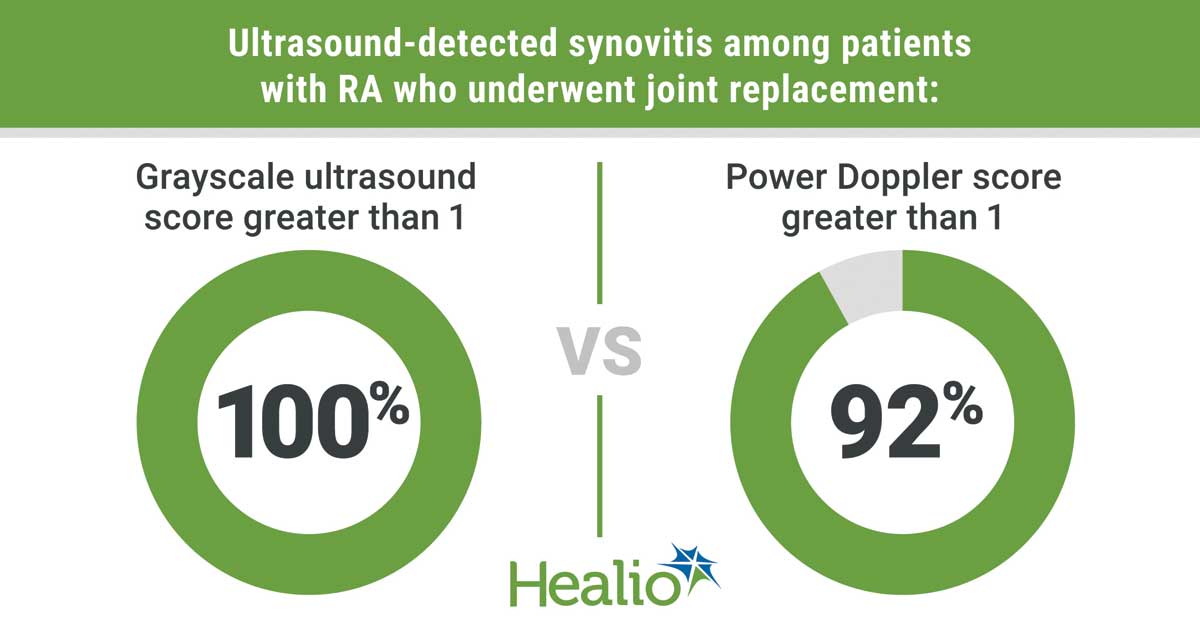Joint Replacement Fails to Eliminate, Prevent Ultrasound Synovitis in RA

Ranganath
Joint replacement neither eliminates nor prevents ultrasound-detected synovitis among patients with rheumatoid arthritis, according to data published in BMC Rheumatology.
“This is a novel ultrasound RA study examining the amount of synovitis within replaced joints,” Veena K. Ranganath, MD, of the University of California, Los Angeles, told Healio Rheumatology. “Despite how commonly joints are replaced in RA, these joints have not been systematically characterized by imaging modalities. It is frequently thought that with joint replacements, the synovium should be removed, thus, patients would not develop synovitis. However, our study demonstrates that this isn’t true.”
To study and quantify ultrasound-detected synovitis in surgically operated joints among patients with RA who have started a new treatment, Ranganath and colleagues conducted an ad-hoc analysis of participants in two open-label clinical trials. Patients enrolled in these investigator-initiated trials had been receiving either tocilizumab (Actemra, Genentech) or tofacitinib (Xeljanz, Pfizer), and examined using ultrasound. Ranganath and colleagues analyzed a subset of participants with RA who underwent prior joint replacement or operations in the joint areas.
The researchers compared joint-level synovitis scores between replaced joints, joint areas that received operations and the original joints. In addition, they used grayscale and power Doppler to measure joint-level synovitis at baseline and at 3- and 6-month follow-ups. The researchers then used McNemar’s test or Wilcoxon signed rank test using the mixed effects ordinal logistic regression models.

According to the researchers, 20 participants underwent 25 joint replacements and 24 joint-area operations. All replaced joints demonstrated a grayscale ultrasound score greater than1, and 92% demonstrated a power Doppler score greater than1 at baseline. Ranganath and colleagues noted that 37.5% of operated joint areas and 38% of native joints had grayscale scores of greater than 1, and 45.8% and 62%, respectively, demonstrated power Doppler scores greater than1.
In addition, grayscale (P=.01) and power Doppler (P=.007) semiquantitative scores improved significantly with treatment in replaced joints, as well as in native joints (P<.001 for both), but not in operated joint areas.
“Almost all replaced joints had some evidence of inflammation within the joint,” Ranganath said. “In addition, it appears that RA treatment does improve the synovitis seen in replaced joints. Interestingly, RA clinical outcome measures exclude these replaced joints and this study may suggest that further research is needed to see if this the correct strategy.” – by Jason Laday
Disclosures: Ranganath reports research support and grants from Amgen, Bristol-Myers Squibb, Genentech, Mallinckrodt and Pfizer. Please see the study for all other authors’ relevant financial disclosures.
